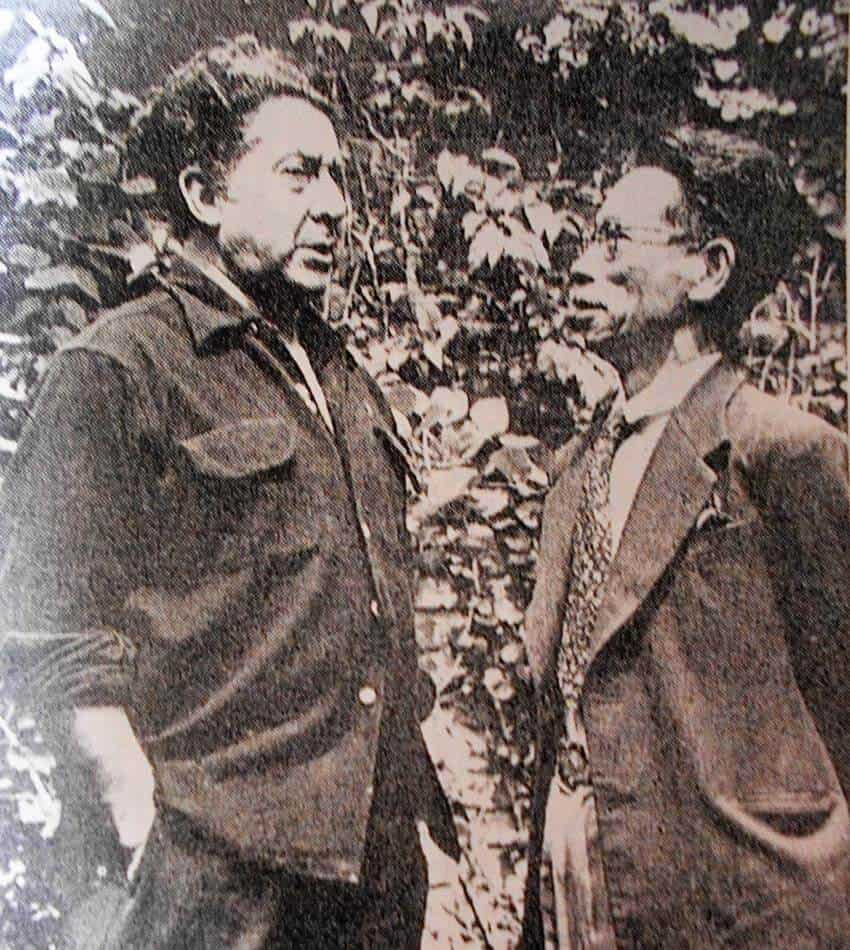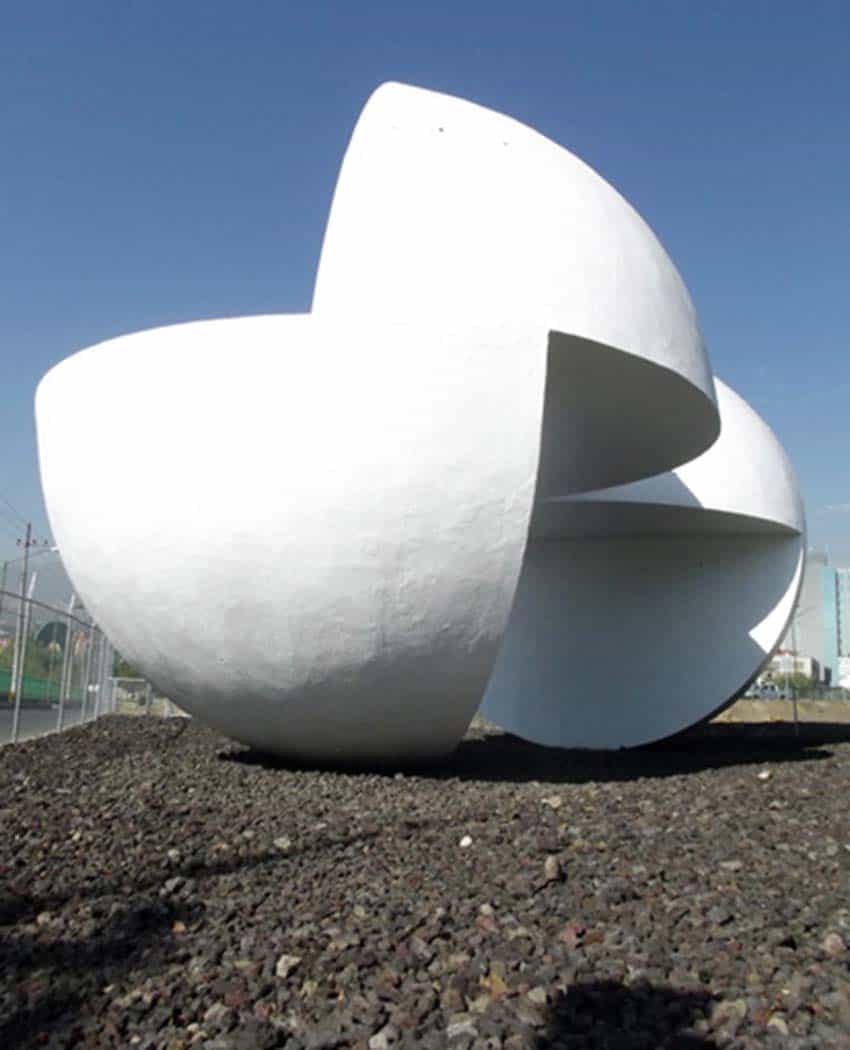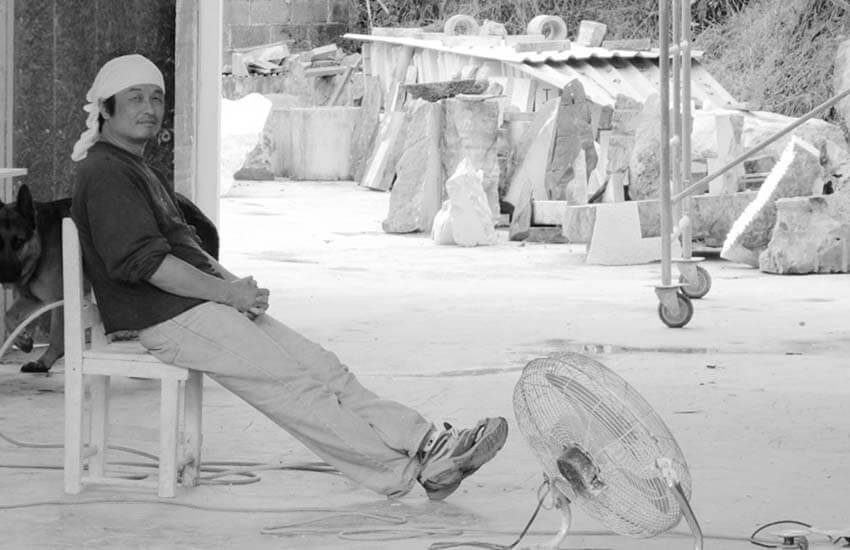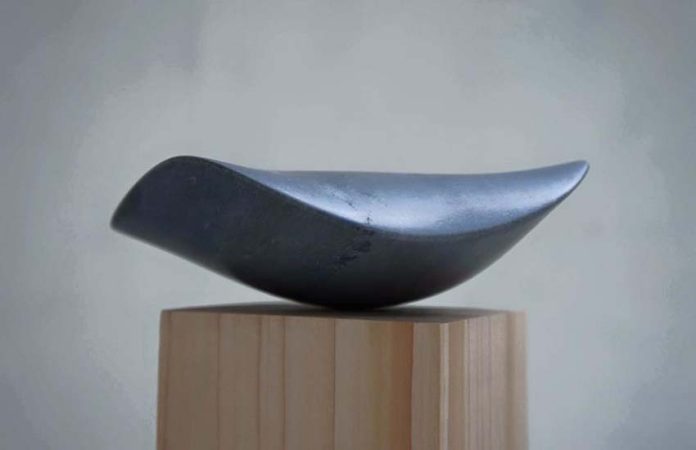There are three Japanese sculptors — Kiyoshi Takahashi, Hiroyuki Okumura and Ryuichi Yahagi — who never planned on making Mexico a fundamental part of their lives, but they did, and to the benefit of sculpture in Mexico and their adopted home of Veracruz.
I think a lot of us long-timers in Mexico can relate to that sentiment, but it might be odd to think that Mexico can have such a pull on people from so far away.
But there has been contact between Mexico and Asia since the early colonial period, including Japan through attempts to evangelize there.
This explains why a decent number of Japanese artists found their way to Mexico starting in the 20th century. Much of the credit belongs to Tamiji Kitagawa (1894–1989), who found himself in Mexico almost by accident in the late 1920s.
His artistic development was strongly influenced by Mexico’s muralism, a form he took back to Japan during World War II.

He might have died an unknown eccentric but for a major exhibition of Mexican artwork held by the Tokyo National Museum in 1955, which made him instantly the country’s expert on Mexican art. This exhibition had a direct and indirect impact on many Japanese artists of the time, including sculptor Kiyoshi Takahashi (1925–1996).
For Takahashi, the main draw of Mexico was its pre-Hispanic heritage. According to researcher María Teresa Favela Fierro, one of the attractions for Japanese artists seems to be “the energy, the spirituality” that for these artists “… is fundamental, that “… pre-Columbian works are magical, intimate, related to man and his universe, trying to give an artistic expression to the concept of the divine.”
Takahashi came to Mexico in 1957 on a scholarship, making his way to Veracruz, drawn here in large part by the sculpting heritage of the Olmecs and others. Giant heads and other amazing feats in stone provided his basic inspiration, working from the Universidad Veracruzana in Xalapa in the 1960s.
His career reached its height with exhibitions at the Museum of Modern Art in Mexico City, a monumental sculpture for the 1968 Olympics and more. But in 1969, he decided to return to Japan. He would continue sculpting and teaching, but his glory days seemed to be behind him.
Although obscure in both countries, his work is better known in Mexico than in his native Japan. What he did do, however, perhaps unconsciously, was set off a chain reaction of Japanese art students who wanted to see Mexico for themselves.
One of these students is sculptor Hiroyuki Okumura, who met Takahashi in 1989 as a collaborator on a monumental sculpture in Japan’s Kanazawa prefecture.

“His (Takahashi’s) work impressed me. I felt I had to get to know the origin of its influence,” Okumura said. “First, I planned a short one-month trip to Mexico, and I devoted my time mainly to visiting the archaeological ruins of Teotihuacán, Monte Albán, Mitla, Palenque and Chichén Itzá, as well as museums.
“It was my first time out of Japan, and [that] I was in contact with another culture. It was something new to see the landscape, so wide open, after coming from such a small country. Mexico had no limits. The concept of space was very different and came to influence me very strongly.”
Okumura had no intention of making Mexico his permanent home, but over 30 years later, he is still in Mexico and still in Xalapa, the home of the university campus where Takahashi taught. He is a full-time sculptor, exhibiting primarily in Mexico and occasionally in the United States.
Mexico’s pre-Hispanic influences are evident in his work, but so is abstractionism, the next strongest current of Mexican art after muralism. According to Okumura, he has evolved away from pre-Hispanic influence in form but not spiritually.
Another important Japan-born artist in Xalapa is Ryuichi Yahagi. In Japan, he had contact with both Takahashi and Okumura and decided to visit Mexico in 1994 to see the archaeological sites and study Spanish.
But Yahagi says his decision to live and work in Veracruz comes primarily from what he found in this state rather than his connections to these two men. Yahagi is particularly drawn to Olmec sculpture, saying that later pre-Hispanic cultures focused on ceramics and not on the stone that he prefers.

He decided to live in Mexico a year later, but it was rough going initially. Several times, he had to return to Japan to earn money until he was able to open a Japanese restaurant in Xalapa that also served as a gallery for his work.
Since then, he has been able to create a stable career both as a producer and a researcher affiliated with the Universidad Veracruzana.
One interesting effect that Mexico has had on his work is that practical considerations have forced him to think about stone sculpture in different ways. He lacks access to heavy machinery that allowed him to work with stone weighing up to 30 tons in Japan. He has had to learn to get his expressions across at a smaller scale.
For all three sculptors, the reason to come and live in Mexico was purely cultural, all of them particularly impressed with pre-Hispanic art. This may seem odd given that the Olmecs and the like are so far removed both geographically and chronologically from modern Japan. But I’m reminded of a comment made by a former classmate of mine from China upon seeing a sculpture of the pre-Hispanic deity Quetzalcóatl for the first time:
“It looks like a Chinese dragon.”
Leigh Thelmadatter arrived in Mexico 18 years ago and fell in love with the land and the culture in particular its handcrafts and art. She is the author of Mexican Cartonería: Paper, Paste and Fiesta (Schiffer 2019). Her culture column appears regularly on Mexico News Daily.
